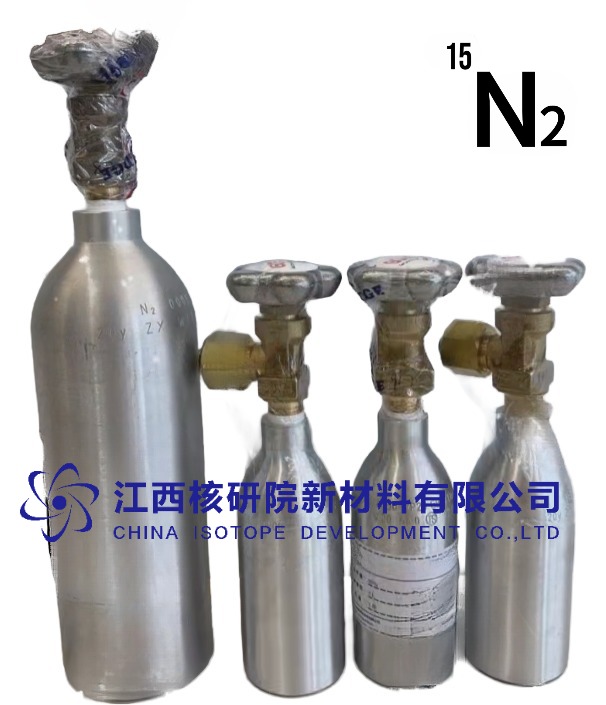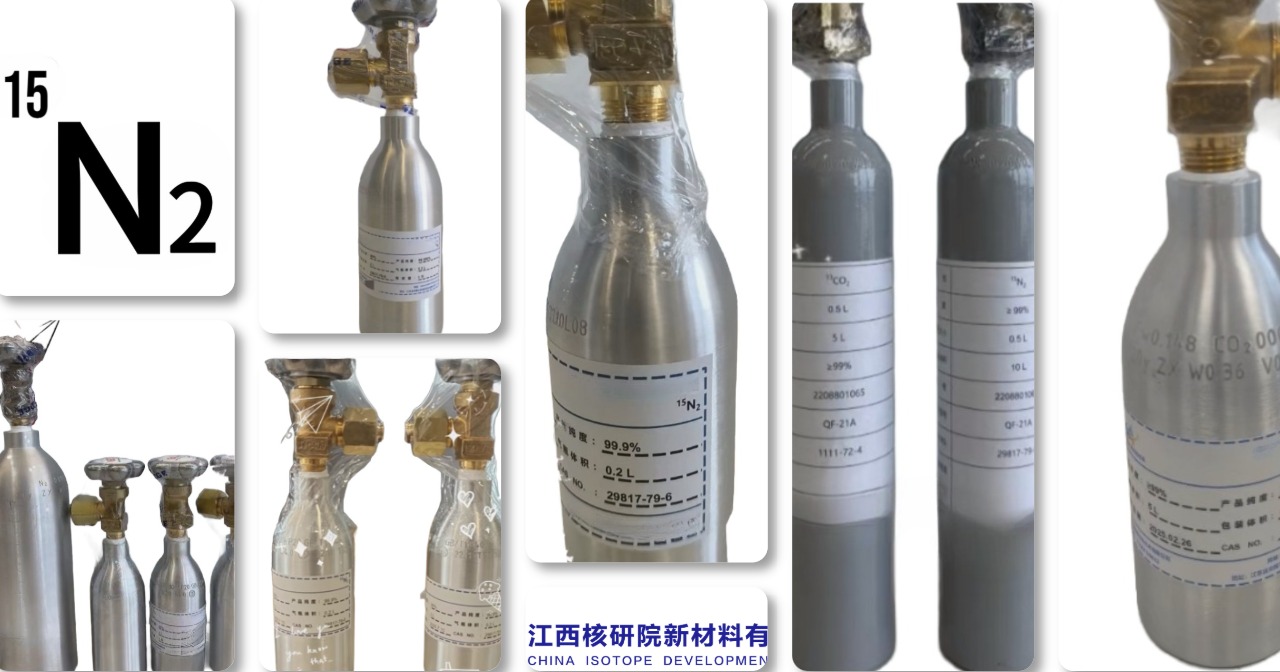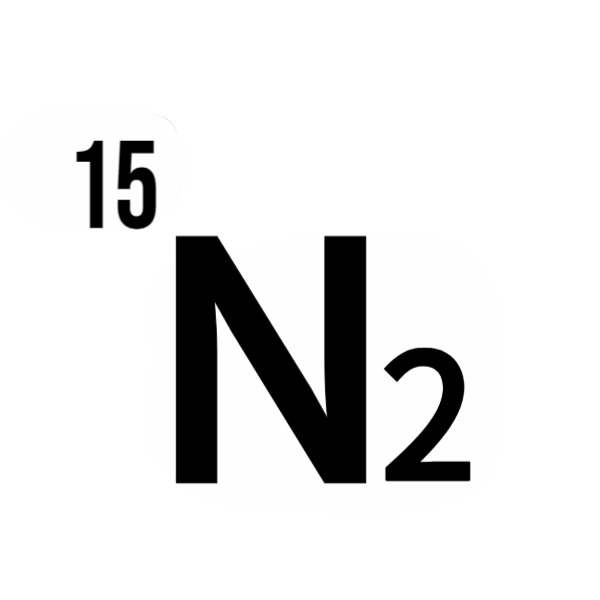Nitrogen-15: A Critical Tool for Climate Change and Nitrogen Cycle Studies
BY Tao, Published Aug 13, 2025
1. The Vital Role of Nitrogen in Environmental Systems
Nitrogen, an essential element in Earth’s ecosystems, drives biological processes and influences atmospheric chemistry. As a nuclear research expert with decades of experience in isotopic science, I have seen how Nitrogen-15 (¹⁵N), a stable isotope with a natural abundance of just 0.37%, transforms our understanding of the nitrogen cycle and its implications for climate change. Unlike the dominant Nitrogen-14 (¹⁴N), ¹⁵N’s unique nuclear properties and isotopic signature enable precise tracking of nitrogen movement through soils, plants, water, and the atmosphere. This capability is critical for addressing climate challenges, such as greenhouse gas emissions and nutrient pollution, which threaten global ecosystems. By leveraging ¹⁵N, researchers quantify nitrogen dynamics, informing strategies to mitigate environmental impacts while sustaining agricultural productivity.
The nitrogen cycle, encompassing fixation, assimilation, and loss, is intricately linked to climate change. Excess nitrogen from fertilizers contributes to nitrous oxide (N₂O) emissions, a greenhouse gas 300 times more potent than CO₂. My extensive work with isotopes underscores how ¹⁵N tracers illuminate these processes, offering actionable insights for climate-smart solutions.
2. Why Nitrogen-15? The Isotopic Edge
Nitrogen-15’s utility stems from its nuclear spin of 1/2, which avoids the quadrupolar broadening of ¹⁴N’s spin-1 nucleus, enabling high-resolution analysis in mass spectrometry and nuclear magnetic resonance (NMR). Its extra neutron shifts isotopic ratios, detectable at parts-per-million levels, making ¹⁵N an ideal tracer for nitrogen pathways. Unlike radioactive isotopes, ¹⁵N’s stability ensures safety for long-term environmental studies, a key advantage in my research on isotopic applications.
Enrichment, typically to 98-99.9%, amplifies ¹⁵N’s signal, overcoming its low natural abundance. This allows researchers to distinguish anthropogenic nitrogen inputs (e.g., fertilizers with δ¹⁵N ~0‰) from natural sources (e.g., manure at 5-10‰), providing clarity on pollution sources and cycling mechanisms. These properties make ¹⁵N indispensable for climate and environmental research.
Key advantages include:
-
Precision Tracing: Detects nitrogen movement with high sensitivity.
-
Stable and Safe: No radiological risks, ideal for field studies.
-
High-Resolution Analysis: Sharp NMR signals for soil and water samples.
-
Source Differentiation: Distinguishes between natural and synthetic nitrogen inputs.
These attributes position ¹⁵N as a critical tool for unraveling the nitrogen cycle’s complexities.
3. Nitrogen-15 in Nitrogen Cycle Studies
The nitrogen cycle governs how nitrogen transforms between forms—ammonium, nitrate, organic compounds, and gases—across ecosystems. Nitrogen-15 tracers provide granular insights into these processes, revealing inefficiencies and environmental impacts. For instance, ¹⁵N-labeled fertilizers track nitrogen uptake, showing that 30-50% of applied nitrogen is lost to leaching or denitrification, contributing to water pollution and N₂O emissions.
In soil studies, ¹⁵N quantifies microbial processes like nitrification and denitrification. By analyzing isotopic ratios in soil fractions, researchers measure how much nitrogen is fixed by bacteria versus lost as N₂O. My work has shown that ¹⁵N can reduce fertilizer waste by guiding precise application, cutting N₂O emissions by 10-20%.
In aquatic systems, ¹⁵N traces nitrate movement, identifying sources of eutrophication. For example, elevated δ¹⁵N in rivers often signals agricultural runoff, enabling targeted mitigation. These studies are vital for balancing productivity with environmental health.
Applications in nitrogen cycle research include:
-
Soil Dynamics: Quantifies microbial nitrogen transformations.
-
Aquatic Systems: Tracks nutrient pollution in waterways.
-
Plant Uptake: Optimizes fertilizer efficiency for crops.
-
Gas Emissions: Measures N₂O production from soils.
These insights drive sustainable nitrogen management, directly addressing climate impacts.
4. Nitrogen-15’s Role in Climate Change Mitigation
Climate change is exacerbated by nitrogen-related greenhouse gases, particularly N₂O, which accounts for ~6% of global warming potential. Nitrogen-15 tracers quantify N₂O production pathways, revealing that denitrification in waterlogged soils is a major source. By using ¹⁵N-labeled compounds, researchers measure emission rates, informing strategies like nitrification inhibitors or cover cropping, which can reduce N₂O by up to 25%.
¹⁵N also supports carbon sequestration studies. Nitrogen availability limits plant growth, affecting CO₂ uptake. By tracing ¹⁵N in agroecosystems, researchers optimize fertilization to enhance biomass, indirectly sequestering carbon. My decades of isotopic research highlight how these data-driven approaches align agriculture with climate goals.
A table of ¹⁵N’s climate-related applications includes:
|
Application Area |
Role of ¹⁵N |
Climate Impact |
|---|---|---|
|
N₂O Emissions |
Quantifies denitrification rates |
Reduces greenhouse gas output |
|
Fertilizer Optimization |
Tracks uptake, minimizes runoff |
Lowers N₂O and nitrate pollution |
|
Carbon Sequestration |
Enhances plant growth for CO₂ uptake |
Increases soil carbon storage |
|
Pollution Source ID |
Differentiates nitrogen inputs |
Mitigates eutrophication |
These applications make ¹⁵N a linchpin for climate-resilient ecosystems.
5. Product Specifications for ¹⁵N-Enriched Compounds
Nitrogen-15-enriched compounds, such as ¹⁵N₂ gas, ammonium salts, or urea, are tailored for environmental tracing. These products meet stringent standards for accuracy and reliability.
Specifications include:
-
Isotopic Enrichment: 98-99.9 atom % ¹⁵N, ensuring clear isotopic signals.
-
Chemical Purity: ≥99.99%, with impurities (e.g., water, oxygen) <1 ppm.
-
Molecular Formula: ¹⁵N₂ (CAS: 14390-96-6), ¹⁵NH₄NO₃ (CAS: 31432-46-9), or (¹⁵NH₂)₂CO (CAS: 5941-64-6).
-
Physical Form: Gases in 1-50L cylinders; solids as powders in 0.1-100 g vials.
-
Packaging: Sealed under inert atmosphere to prevent contamination.
-
Stability: Indefinite as a stable isotope; store gases below 50°C, solids at 2-8°C.
These products, sourced from isotope specialists, support robust environmental studies.
6. Performance Metrics and Usage Guidelines
¹⁵N compounds deliver high performance in analytical settings. Enrichment to 99% boosts signal intensity 270-fold, enabling detection via isotope ratio mass spectrometry (IRMS) at 0.01 atom % sensitivity. In NMR, ¹⁵N achieves linewidths <1 Hz at 500-900 MHz, ideal for soil and water analysis.
Usage guidelines include:
-
Application Rates: 0.1-1 kg/ha for ¹⁵N fertilizers in field studies; 1-10 mM for NMR samples.
-
Calibration: Use IAEA-N-1 or nitromethane (δ=0 ppm) for IRMS and NMR, respectively.
-
Analysis: Employ IRMS for isotopic ratios; HSQC for NMR-based tracing.
-
Sample Preparation: Dissolve solids in D₂O or buffer; dilute gases for atmospheric studies.
My experience emphasizes precise calibration and optimized protocols to maximize data quality.
7. Safety and Handling Precautions
¹⁵N compounds, while stable, require careful handling. Gaseous ¹⁵N₂ risks asphyxiation in confined spaces; use in ventilated areas with oxygen monitors. Ammonia-based ¹⁵N compounds are corrosive, necessitating gloves, goggles, and fume hoods. Solids like ¹⁵N-urea are hygroscopic, requiring dry storage.
Safety measures include:
-
Storage: Keep gases in secured cylinders below 50°C; solids at 2-8°C in sealed containers.
-
Handling: Use PPE; prepare in fume hoods to avoid inhalation or skin contact.
-
Disposal: Neutralize solutions per local regulations; recycle cylinders.
-
Quality Control: Verify purity via certificates of analysis.
Rigorous protocols, refined over my career, ensure safe and effective use.
8. Future Directions for ¹⁵N in Climate Research
The future of Nitrogen-15 in climate studies is promising. Portable IRMS units could enable on-site nitrogen tracing, accelerating data collection. Integration with IoT and satellite imagery may map ¹⁵N dynamics in real time, optimizing global nitrogen management. Combining ¹⁵N with Carbon-13 tracers could model coupled carbon-nitrogen cycles, enhancing climate models.
Emerging hyperpolarized NMR techniques may amplify ¹⁵N signals for rapid soil analysis Ascendancy and Future Directions for ¹⁵N in Climate Research The future of Nitrogen-15 in climate studies is promising. Portable IRMS units could enable on-site nitrogen tracing, accelerating data collection. Integration with IoT and satellite imagery may map ¹⁵N dynamics in real time, optimizing global nitrogen management. Combining ¹⁵N with Carbon-13 tracers could model coupled carbon-nitrogen cycles, enhancing climate models.
Emerging hyperpolarized NMR techniques may amplify ¹⁵N signals for rapid soil analysis, while AI-driven data interpretation could streamline complex datasets. My ongoing research suggests these innovations will strengthen ¹⁵N’s role in mitigating climate change, fostering sustainable ecosystems.
Would you like a deeper dive into any specific applications (e.g., cancer diagnostics, microbiome research)?
(Follow our update on www.asiaisotopeintl.com or contact tao.hu@asiaisotope.com for more information or call us for a in-time communications.)









